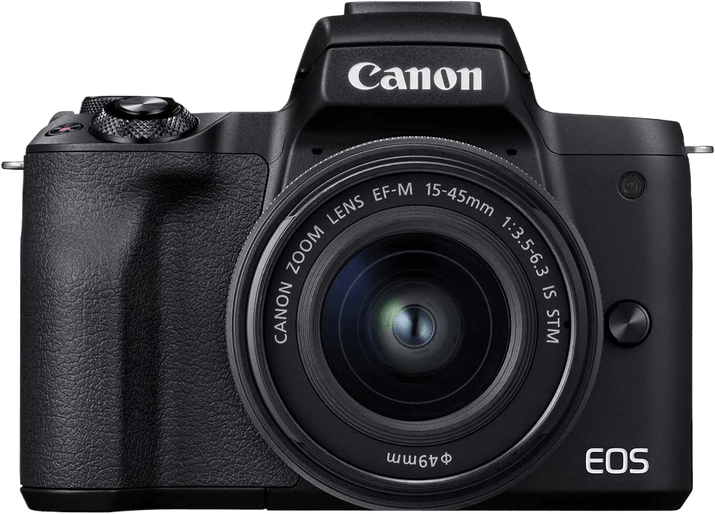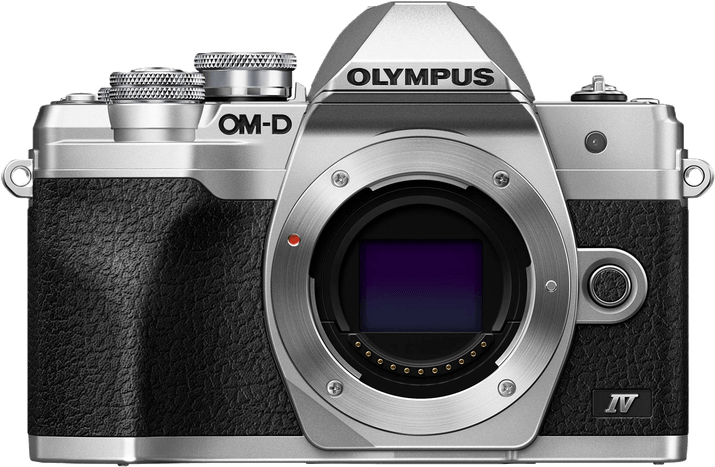Canon EOS M50 Mark II vs Olympus OM-D E-M10 Mark IV Comparison
Canon EOS M50 Mark II

Olympus OM-D E-M10 Mark IV

The Olympus OM-D E-M10 Mark IV outperforms the Canon EOS M50 Mark II with a score of 63/100 compared to 59/100. Both cameras are mirrorless, released in 2020, and have similar sizes and weights. The Canon EOS M50 Mark II measures 116 x 88 x 59mm and weighs 387g, while the Olympus OM-D E-M10 Mark IV measures 122 x 84 x 49mm and weighs 383g.
The Olympus OM-D E-M10 Mark IV has a lower launch price of $699 compared to the Canon’s $750, making it more affordable. The Canon EOS M50 Mark II has a slightly larger body, which could provide better grip and handling for some users. However, the Olympus OM-D E-M10 Mark IV’s compact size and lighter weight make it more portable and convenient for travel.
Considering the higher score, lower price, and compact design, the Olympus OM-D E-M10 Mark IV is a better choice for most users. The Canon EOS M50 Mark II may still appeal to those who prefer a larger body, but the Olympus offers more advantages overall.
Canon EOS M50 Mark II vs Olympus OM-D E-M10 Mark IV Overview and Optics
The Olympus OM-D E-M10 Mark IV outperforms the Canon EOS M50 Mark II in optics, with a score of 63/100 compared to 59/100. Both cameras have CMOS sensors, similar processors (TruePic VIII for Olympus and Digic 8 for Canon), and distinct lens mounts (Micro 4/3 for Olympus and Canon EF-M for Canon).
The Olympus OM-D E-M10 Mark IV surpasses the Canon EOS M50 Mark II in several aspects. With a higher DXOMARK sensor score of 73, the Olympus camera provides better image quality. It also offers a faster shooting speed of 15 frames per second, compared to Canon’s 10 frames per second. Moreover, the Olympus camera has built-in image stabilization, which the Canon camera lacks. This feature helps capture sharper images, especially in low-light situations or when using longer focal lengths.
On the other hand, the Canon EOS M50 Mark II has a larger sensor size (APS-C) and higher megapixel count (24) than the Olympus OM-D E-M10 Mark IV (Micro Four Thirds sensor and 20 megapixels). The larger sensor size and higher megapixel count contribute to better image quality and detail.
In terms of optics, the Olympus OM-D E-M10 Mark IV is the superior choice due to its higher DXOMARK sensor score, faster shooting speed, and built-in image stabilization. However, the Canon EOS M50 Mark II has its advantages with a larger sensor size and higher megapixel count. Ultimately, the decision between these two cameras depends on the specific needs and preferences of the photographer.
Canon EOS M50 Mark II vs Olympus OM-D E-M10 Mark IV Video Performance
The Canon EOS M50 Mark II emerges as the winner in video capabilities, scoring 91/100, while the Olympus OM-D E-M10 Mark IV trails behind with a score of 83/100. Both cameras share some common specifications when it comes to video recording, such as 4K maximum video resolution and 3840 x 2160 maximum video dimensions. Additionally, both cameras have built-in time-lapse functionality.
The Canon EOS M50 Mark II outperforms the Olympus OM-D E-M10 Mark IV in a few key areas. The most notable advantage is its maximum video frame rate of 120fps, which is double the Olympus camera’s 60fps. This higher frame rate enables smoother slow-motion video capture and provides more flexibility during video editing.
Although the Olympus OM-D E-M10 Mark IV has a lower video score, it still offers respectable video capabilities. Its 4K resolution and built-in time-lapse functionality are comparable to the Canon EOS M50 Mark II. However, its maximum video frame rate of 60fps is the primary factor that contributes to its lower score.
To conclude, the Canon EOS M50 Mark II is superior in video capabilities due to its higher video score and maximum video frame rate of 120fps. On the other hand, the Olympus OM-D E-M10 Mark IV remains a viable option for video enthusiasts, with its 4K resolution and time-lapse functionality. Ultimately, the choice between these two cameras will depend on the user’s specific needs and preferences.
Canon EOS M50 Mark II vs Olympus OM-D E-M10 Mark IV Features and Benefits
The Canon EOS M50 Mark II and Olympus OM-D E-M10 Mark IV both receive a feature score of 70/100, resulting in a tie. Examining their specifications reveals several similarities between the two cameras.
Both cameras have a 3-inch screen size with a resolution of 1,040,000 dots, ensuring clear and vibrant displays. They also feature touchscreens, providing users with an intuitive and user-friendly interface. Additionally, both cameras have flip screens, which offer flexibility for various shooting angles and situations. Neither camera includes GPS functionality, but both have WIFI and Bluetooth connectivity for seamless sharing and remote control.
Despite their tied scores, each camera has its unique strengths. The Canon EOS M50 Mark II is known for its fast and accurate autofocus system, which allows for sharp images and improved performance in low-light conditions. This feature is particularly useful for photographers who frequently shoot moving subjects or in challenging lighting situations.
On the other hand, the Olympus OM-D E-M10 Mark IV has a superior in-body image stabilization system, which compensates for camera shake and results in sharper images. This feature is especially beneficial for those who often shoot handheld or in situations where a tripod is not feasible.
After comparing the features of both cameras, it is clear that they share several similarities, but each has its unique advantages. The Canon EOS M50 Mark II excels in autofocus performance, while the Olympus OM-D E-M10 Mark IV offers superior image stabilization. Ultimately, the choice between these two cameras depends on the specific needs and preferences of the photographer.
Canon EOS M50 Mark II vs Olympus OM-D E-M10 Mark IV Storage and Battery
The Olympus OM-D E-M10 Mark IV outperforms the Canon EOS M50 Mark II in storage and battery, scoring 35/100 compared to the Canon’s 21/100. Both cameras have one memory card slot and accept SD, SDHC, and SDXC cards. However, the Olympus E-M10 Mark IV is compatible with faster UHS-II cards, while the Canon M50 Mark II only supports UHS-I cards.
The Olympus E-M10 Mark IV also has a longer battery life of 360 shots, compared to the Canon M50 Mark II’s 305 shots. Additionally, the Olympus camera uses a BLS-50 battery and offers USB charging, making it more convenient for on-the-go use. The Canon M50 Mark II relies on an LP-E12 battery and does not support USB charging.
While the Canon M50 Mark II falls short in storage and battery performance, it does not offer any advantages in these areas compared to the Olympus E-M10 Mark IV. The Olympus camera clearly provides better storage and battery capabilities, making it the superior choice in this aspect.
Canon EOS M50 Mark II vs Olympus OM-D E-M10 Mark IV – Our Verdict
Are you still undecided about which camera is right for you? Have a look at these popular comparisons that feature the Canon EOS M50 Mark II or the Olympus OM-D E-M10 Mark IV:

